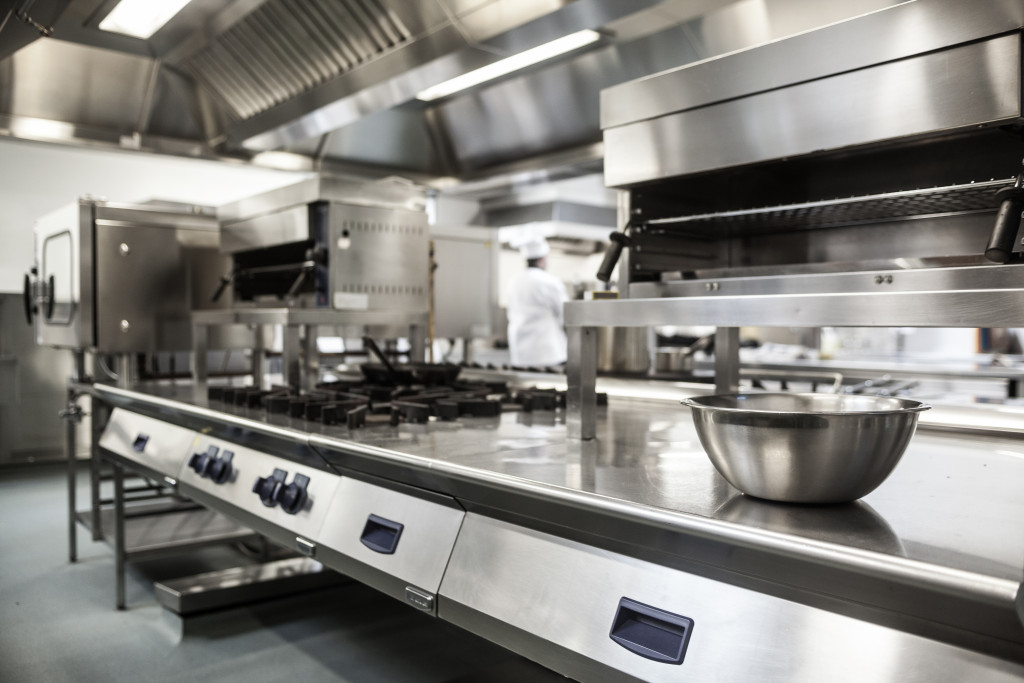- Ghost kitchens are virtual restaurants that operate solely for delivery and takeout orders, allowing for low overhead costs and higher flexibility.
- This concept has gained popularity during the pandemic, with an estimated value of $56 billion in 2020 and expected to reach $1.5 billion by 2021.
- Ghost kitchens provide a wider audience reach, increase order fulfillment during peak hours, and reduce the risk of failure compared to traditional restaurants.
- Entrepreneurs must remodel their kitchens to start a ghost kitchen and develop a strategy aligned with menus, pricing, and more.
- With the right approach, ghost kitchens can be a great way to start a micro-business and enjoy success in the food industry.
The ghost kitchen concept has recently gained popularity in the food industry. Ghost kitchen, or virtual kitchen, as they are commonly known, refers to restaurants that operate solely for delivery and takeout orders, often without a physical dining space. This innovation provides an avenue for food entrepreneurs to start a micro-business and operate at significantly lower costs than they would with a traditional restaurant.
The State of Ghost Kitchens Today
Ghost kitchens have been growing ever since the pandemic. Many people had to flock to online delivery services due to the closure of physical restaurants. This gave a significant boost to this relatively new concept.
These days, ghost kitchens are enjoying success in numerous countries worldwide. In fact, according to a report, ghost kitchens were estimated at $56 billion in 2020 and are expected to reach $1.5 billion by 2021. Here are some reasons why it can be an excellent micro-business for you.
Low Overheads
The primary attraction of the ghost kitchen model is the low overhead costs. With the rising costs of commercial real estate and labor, ghost kitchens offer a solution that eliminates the significant costs of maintaining a large, physical restaurant space. Business owners can set up a ghost kitchen in an affordable location, avoiding expensive real estate costs. Also, a virtual kitchen requires less staff than a traditional restaurant, reducing labor costs.

Flexibility
Ghost kitchens offer entrepreneurs flexibility that is hard to find in the traditional brick-and-mortar restaurant model. Virtual restaurants can easily adjust menus, manage inventory, and scale operations in response to customer demand. With ghost kitchens, entrepreneurs can test out new menu items and concepts without the high risks associated with a traditional restaurant. This flexibility allows business owners to tweak their business models and respond quickly to new trends and customer preferences.
Wider Audience Reach
A ghost kitchen allows business owners to reach a broader audience than a traditional restaurant. With a virtual storefront, businesses can extend their reach to locations outside their immediate neighborhood. This model also increases order fulfillment during peak hours, increasing sales and revenue.
Lower Failure Rate
The high costs involved in running a traditional restaurant result in a high failure rate in the industry. Ghost kitchens eliminate many overhead expenses, significantly reducing the risk of failure. The concept is ideal for entrepreneurs looking to test out a restaurant concept without assuming significant financial risk.
Starting a Ghost Kitchen
A ghost kitchen can make a difference to your business, but you must act quickly. There are many ghost kitchen operators out there, and competition is fierce. Before taking the plunge, research the concept and understand how it works. Here’s how to get started.

Remodel Your Kitchen
It’s wise to start your micro-business at home. This means remodeling your kitchen. Your kitchen needs to be able to handle higher volumes of food orders. You’ll need to install additional storage shelves, freezers, and the right commercial-grade cooking equipment. If you want to do this as a package, consider hiring a kitchen remodeling service. The service can help you customize your kitchen to meet the needs of your business.
Develop a Strategy
Once you’ve remodeled your kitchen, it’s time to develop a strategy for running your ghost kitchen. You need to make sure that all aspects of the business are aligned with each other. This includes developing menus and pricing strategies, creating delivery plans, and figuring out marketing strategies. This will help you create a successful business model and get your ghost kitchen up and running quickly.
Market Your Business
Once your business is up and running, it’s time to spread the word. Promote your ghost kitchen through social media, email campaigns, and other digital channels. You can also partner with local vendors and distributors to increase visibility and reach a larger audience. Moreover, ensure you spend time with customers, ask for feedback and implement changes accordingly.
Ghost kitchens are an exciting new concept that can offer food entrepreneurs a great way to start a micro-business at low costs. With the right strategy, you can start your virtual restaurant and enjoy success in the food industry.




